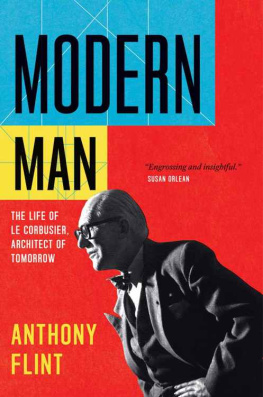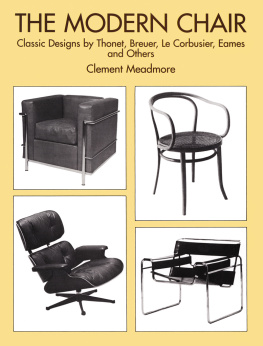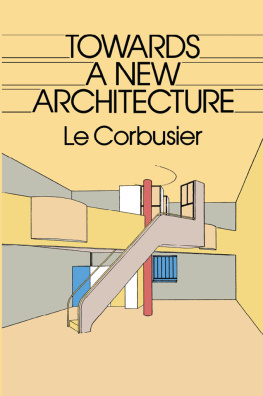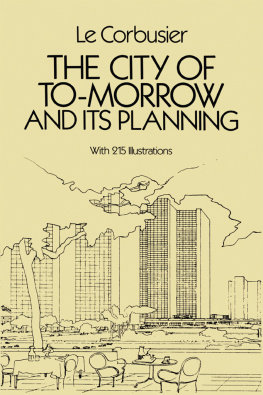Flint - Modern Man: The Life of Le Corbusier, Architect of Tomorrow
Here you can read online Flint - Modern Man: The Life of Le Corbusier, Architect of Tomorrow full text of the book (entire story) in english for free. Download pdf and epub, get meaning, cover and reviews about this ebook. year: 2014, publisher: New Harvest, genre: Non-fiction. Description of the work, (preface) as well as reviews are available. Best literature library LitArk.com created for fans of good reading and offers a wide selection of genres:
Romance novel
Science fiction
Adventure
Detective
Science
History
Home and family
Prose
Art
Politics
Computer
Non-fiction
Religion
Business
Children
Humor
Choose a favorite category and find really read worthwhile books. Enjoy immersion in the world of imagination, feel the emotions of the characters or learn something new for yourself, make an fascinating discovery.
- Book:Modern Man: The Life of Le Corbusier, Architect of Tomorrow
- Author:
- Publisher:New Harvest
- Genre:
- Year:2014
- Rating:5 / 5
- Favourites:Add to favourites
- Your mark:
- 100
- 1
- 2
- 3
- 4
- 5
Modern Man: The Life of Le Corbusier, Architect of Tomorrow: summary, description and annotation
We offer to read an annotation, description, summary or preface (depends on what the author of the book "Modern Man: The Life of Le Corbusier, Architect of Tomorrow" wrote himself). If you haven't found the necessary information about the book — write in the comments, we will try to find it.
Flint: author's other books
Who wrote Modern Man: The Life of Le Corbusier, Architect of Tomorrow? Find out the surname, the name of the author of the book and a list of all author's works by series.
Modern Man: The Life of Le Corbusier, Architect of Tomorrow — read online for free the complete book (whole text) full work
Below is the text of the book, divided by pages. System saving the place of the last page read, allows you to conveniently read the book "Modern Man: The Life of Le Corbusier, Architect of Tomorrow" online for free, without having to search again every time where you left off. Put a bookmark, and you can go to the page where you finished reading at any time.
Font size:
Interval:
Bookmark:
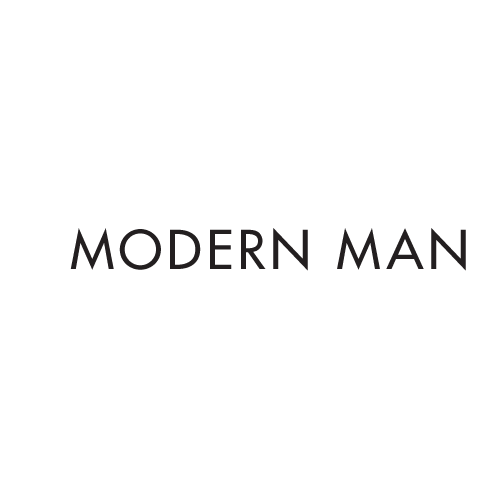
BOOKS BY ANTHONY FLINT
Wrestling with Moses: How Jane Jacobs Took On New Yorks Master Builder and Transformed the American City
This Land: The Battle over Sprawl and the Future of America
Smart Growth Policies: An Evaluation of Programs and Outcomes
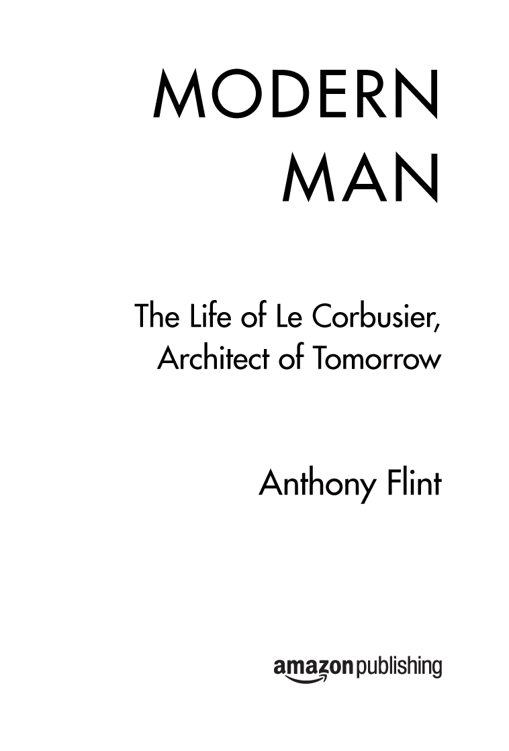
Text copyright 2014 Anthony Flint
All rights reserved.
No part of this work may be reproduced, or stored in a retrieval system, or transmitted in any form or by any means, electronic, mechanical, photocopying, recording, or otherwise, without written permission of the publisher.
Published by Amazon Publishing, New York
www.apub.com
Amazon, the Amazon logo and Amazon Publishing are trademarks of Amazon.com, Inc. or its affiliates.
eISBN: 9781477850350
Cover design by Isaac Tobin
Photograph of Le Corbusier Yousuf Karsh
To Melissa, who went her own way also
CONTENTS
INTRODUCTION
The Ascent
He smiled, knowing their worlds were not so far apart. As his stateroom companion well knew, he was no ordinary draftsman.
He had been welcomed in South America as a celebrity just as much as she was: the man from Paris, stepping out in tailored suit with a pocket square and bow tie, filling lecture halls across the continent with those eager to hear his radical new theories in architecture and urban planning. He was breaking the mold in building homes and entire citiesjust as Pablo Picasso had in painting and Ernest Hemingway with the novelsculpting smooth, white, streamlined buildings that had never been seen before, forgoing wood and brick and stone for concrete, replacing staircases with spirals and ramps, wrapping exteriors with long ribbons of black-framed windows, and planting gardens on rooftop terraces. Everything about his architecture was different. He perched his buildings on sturdy yet elegant concrete columns he called pilotis, freeing the ground for cars and open space, and making the structures appear to float in air. And his formula was repeatableefficient housing built with low-cost construction methods, whether three-story town houses or towers set in parks, linked by spacious high-speed roadways and ultimately served by planes and helicopters. The turn of the twentieth century had brought the machine agecars, locomotives, planes, and the factories of mass-production manufacturingand that most fundamental of lifes functions, the habitation of homes and cities, required the same modernization. The dapper visitor with the slicked-back hair and round black eyeglasses was delivering a new way to live.
Becoming Le Corbusiernot just a man, but a forcehad required no little marketing. He adopted the pseudonym in 1920, leaving behind his given name, Charles-douard Jeanneret-Gris. Taking a single moniker was popular among the bohemians and artists in Paris at the time, and for him the act had a symbolism all its own. While inspired in part by his great-grandfather Monsieur Lecorbesier of Brussels and the eighteenth-century French actress Adrienne Lecouvreur, a former resident of the town house where he lived in Paris, the renaming signaled his break with the past, with Victorian and bourgeois traditions, and the embrace of the modern. But it was also an exercise in branding. The original star architect would be forever distinguished from all other innovators in design, including his American rival, Frank Lloyd Wright. The name was reminiscent of a mystic bird of Celtic lore, the highly intelligent hunter and scavenger le corbeau, the raven. He had taken to drawing himself as the sleek black bird, peering down from a tightly gripped perch, assessing the landscape, ready to launch in acrobatic flight.
All of Paris, wealthy clients and bohemians alike, knew where to go to find new ideas in design: 35 rue de Svres, the bustling atelier next door to the department store Le Bon March. The equivalent of a start-up in a garage, the top floor of an unremarkable building in the sixth arrondissement served as his headquarters, little more than a long corridor with drafting tables and adjustable black lamps, one after the other, and papers and plans hanging on the walls and sprouting from the floor in rolled-up bunches, like some kind of crazy shrubbery. The apprentices reported each morning, eager to work for the visionary master, alongside the team partners and like-minded innovators: his cousin Pierre Jeanneret and the furniture designer Charlotte Perriand. Each month, it seemed, brought a new building design, a new way to organize life: the places for living, for business, for government, for recreation and culture.
The atelier was the fountainhead for all manner of innovationsa car that was the precursor to the Volkswagen Beetle; furniture made of aluminum tubing, black leather, and spotted horsehair; even, in time, a womens clothing line, an ensemble of V-neck blouses, pleated skirts, and go-anywhere sandals, submitted to Americas first fashion magazine, Harpers Bazaar. At night the team would celebrate with wine and champagne in the bistros of the Latin Quarter, and in the morning, after the master had done calisthenics or played basketball and painted, his lifelong side pursuit, they would all reassemble and get back to the blueprints and do it all over again.
It was gratifying, and utterly intentional, that the people of Latin America, a hemisphere away, would hear about all the excitement. The trip there was one of many international forays for the ambassador of the new order. The fast-growing cities of Argentina and Brazil needed his help to be better-organized, cleaner, more orderly places. Le Corbusier was the man with the plan. In standing-room-only lecture halls, he sketched the next city with charcoal on tan newsprint, never reading from prepared remarks but instead creating a storyboard on the spot. He drew chains of apartment buildings set in open space, awash in sunlight and fresh air, with recreation areas and circulation all around, proposing it all as the most natural of evolutions. To demonstrate how cities cannot be frozen in time, he drew the cathedral of Notre Dame and the Eiffel Tower, and then his towers in the park; the progression honored the past but didnt stay stuck in it, not least because cities of the future needed to be prepared for ever-increasing populations. But as he wrote, the critics and the mandarins in academia were saying no to all of it. They thought it outrageous, to move on from convention and propose new forms. And that just made Le Corbusier more exciting, a true rebel. The Argentineans and Brazilians felt like they were part of somethingthat they were being given the keys to the future. They could even leapfrog places like Paris and New York City in embracing the modern.
While the urban planning schemes had broad appeal, the rich and powerful had something more selfish in mind. They wanted him to build a modern architectural masterpiece as a villa of their own.
It didnt take much time for Josephine Baker to have that idea as well. From the time the fellow Parisian introduced himself after her performance in Buenos Aires, it was clear this was not just another fan eager to meet her backstage. She was charmed and curious. Within a few days of their paths crossing, she was asking him to design a house for her on the Right Bank in Paris, close to Montmartre and the nightclub that helped make her famous, the Maud de Forest.
A mixed-race daughter of St. Louis, she was an impossibly exotic sight, whether warbling tunes with a snake draped around her neck onstage or walking her pet leopard, Chiquita, down the Champs-lyses. Everything about herher hairstyle with a slicked-down curl on her forehead, her gold-painted nails, her designer-made gowns, her caramel-colored skin that inspired a sun-tanning craze at the Cte dAzur, even her American accentwas soaked up in France and around the world. She was the new thing, lifting the people out of their seats and making audiences feel they were part of something.
Next pageFont size:
Interval:
Bookmark:
Similar books «Modern Man: The Life of Le Corbusier, Architect of Tomorrow»
Look at similar books to Modern Man: The Life of Le Corbusier, Architect of Tomorrow. We have selected literature similar in name and meaning in the hope of providing readers with more options to find new, interesting, not yet read works.
Discussion, reviews of the book Modern Man: The Life of Le Corbusier, Architect of Tomorrow and just readers' own opinions. Leave your comments, write what you think about the work, its meaning or the main characters. Specify what exactly you liked and what you didn't like, and why you think so.

